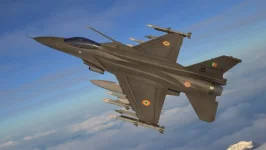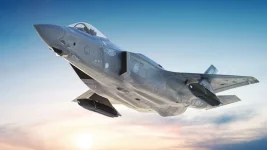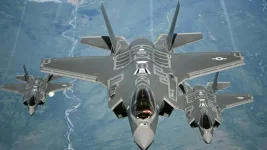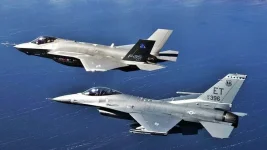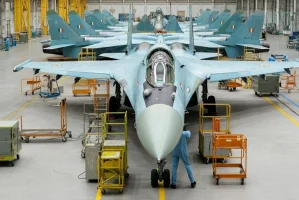Hold your horses there. Let me get your facts right. The C-130J has, to date, been involved in four hull losses globally, including one in India. Three of these were fatal. Of these, the first hull loss was in 2007, and was the result of a terrorist attack. No one lost their life in this, though the aircraft was damaged beyond repair. The other three accidents (one each in 2013, 2014, and 2015) were all fatal, and were all a result of pilot error.
So, to echo my sentiment in my other reply to you, take that nonsense elsewhere. If you are going to attribute pilot error as bad design of the aircraft, then you are not even worth having a discussion to.
How dare you lie about 15% of planes manufactured under c130 series have hull losses.
August 13, 2006: L-100-30 7T-VHG of Air Algérie was destroyed when it collided with terrain following a high-rate descent from 24,000 feet in Piacenza, Italy. The pilot, co-pilot, and flight engineer were killed.[5]
February 23, 2009: An Algerian Air Force C-130 crashed, details not known.
February 11, 2014:
Algerian Air Force C-130 7T-WHM crashed in a mountainous area en route to Constantine, killing all but 1 of the 4 crew and 74 passengers on board.
July 12, 1978: C-130H 748 of the Ecuadorian Air Force and operated by 11 squadron crashed into the eastern slopes of Pichincha Mountains, Ecuador. There were seven fatalities; the plane was transporting general cargo and appliances for the welfare office of the Ecuadorean Air Force.
April 29, 1982: C-130H 743 of the Ecuadorian Air Force operated by 11 Squadron, crashed into a forested hillside 15 kilometers before the runway of Mariscal Sucre Air Base in Quito, during go-around after missed approach.
April 29, 1982: C-130H 743 of the Ecuadorian Air Force operated by 11 Squadron, crashed into a forested hillside 15 kilometers before the runway of Mariscal Sucre Air Base in Quito, during go-around after missed approach.
November 25, 1975: C-130H 203/4X-FBO of the Israeli Defense Force/Air Force crashed into mountain Jebel Halal, 55 kilometers south-southeast of El Arish, Egypt. Pilots were Shaul Bustan and Uri Manor.[37]
Italy
edit
March 3, 1977: C-130H MM61996 of the Italian Air Force (46 Aerobrigata), crashed into Monte Serra, 15 kilometers east of Pisa, Italy.
September 17, 1999: C-130A 3610 of the Mexican Air Force crashed into mountains, 80 kilometers northeast of Mexico City, Mexico.
July 26, 2011: C-130H CNA-OQ of the Royal Moroccan Air Force crashed in southern Morocco, in a mountainous area near the city of Guelmim with 78 fatalities.[43
July 15, 1966: C-130B 24142 of the Pakistan Air Force (6 Squadron) crashed into mountain in Pakistan. All ten aboard killed.[46]
December 16, 1993: C-130H 4761 of the Philippine Air Force (222 Squadron), crashed into Mount Manase, 250 kilometers southeast of Manila during descent towards Naga Airport.
Spain
edit
May 28, 1980: C-130H T.10-1 of the Spanish Air Force (Escuadrón 311) crashed into mountain in central Gran Canaria.
October 19, 1968: C-130E, 17949 of the Turkish Air Force crashed into mountain on approach to Akhisar AB, Manisa, Turkey. Seven crew killed.
October 19, 1968: C-130E, 17949 of the Turkish Air Force crashed into mountain on approach to Akhisar AB, Manisa, Turkey. Seven crew killed.
.
Exact date unknown, c.1962 US C-130 crashed in Iran along the Iran-Turkey-Soviet Union border in the Zagros Mountains,[85] bodies and classified material recovered by US Army Special Forces under command of Lauri Törni, who "led his detachment onto the highest mountain in Iran" in the recovery operation.[86][87]
March 8, 1962:
C-130A 56-0546, c/n 3154, of the 40th Troop Carrier Squadron, 322d Air Division, crashed into mountain peak near Nairobi, Kenya in bad weather after it descended under given altitude. Six crew and seven passengers killed.
MC-130H Combat Talon II 87-0127 of the USAF (7th Special Operations Squadron, 352d Special Operations Group, RAF Mildenhall, United Kingdom), departed Tirana-Rinas Airport, Albania, for a night training mission to work on terrain-following and avoidance skills, airdrops and landing using night-vision goggles. The aircraft was flying 300 feet above the mountainous terrain when it was approaching a ridge. The airplane was not able to clear the ridge and stalled as the crew attempted to climb away. The aircraft struck the ridge, destroying the aircraft and killing all nine crew members on board.
" final retirement in the UK was marked with an impressive flypast tour. On June 14th, 2023, three C-130J Super Hercules aircraft flew an all-day route from RAF Brize Norton, covering a large part of the UK."
"Norwegian and Swedish authorities have launched investigations into the cause of a 15 March crash which killed all five crew members on board one of the Royal Norwegian Air Force's Lockheed Martin C-130J tactical transports
.... Wreckage is scattered over a large area, including in a fresh avalanche zone beneath the impact point.
"The accident is still a mystery to us," Bruun-Hansen says. "The C-130J Hercules" Another crash near mountain.


